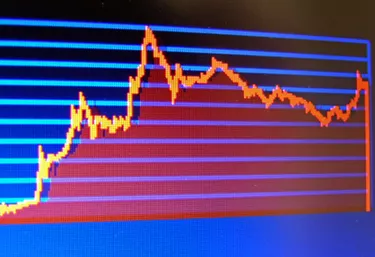
It is not unusual for mainstream news outlets such as newspapers and television shows to occasionally report on particularly dramatic events in the stock market. For most of the public, these news items will be the only exposure they have to stock market activity. But investors and traders and those curious about the financial system may seek to follow the stock market more thoroughly and regularly. There are many ways to follow the stock market and learn about its every move. You can check updates whenever you wish, and even monitor real-time fluctuations that occur within a single trading day.
Market Updates
Video of the Day
Step 1
Visit a major financial charting portal such as Google Finance or Yahoo! Finance for real-time updates to the major stock market indexes, such as the S&P 500 and Dow Jones Industrial Average. You can also get current minute-by-minute updates on individual stocks. The Google Finance system provides other tools for following the stock market as well. It streams news events for any company you chart on the website. News items are attached to the chart so you can see how prices reacted historically. If desired, you can use Google Finance to compare an individual stock's returns to that of a major market index to see if it is outperforming the overall market over a set period of time.
Video of the Day
Step 2
Monitor the pre-market data before the stock market opens each day. This information is available from financial services outlets such as CNN Money and CNBC. The data consists of futures contract pricing. Futures are special market derivatives that are traded 24 hours. If major market-moving events occur overnight due to international stock markets, the futures will reflect this in the morning. The stock market usually opens around the same levels of the futures. Thus it is possible to see how stocks might trade even before the session begins. This is a great way to follow stock market behavior in real-time.
Step 3
Study the "Bullish Percent Index" of individual stock market sectors if you wish to follow the professional sentiment among major money managers at mutual funds and hedge funds. This index is available for many sectors as well as the overall stock market index. Traders who incorporate sentiment readings into their strategies often follow the stock market in this way. It is an innovate approach to reading the minds of the biggest movers in the stock market. When sentiment is very high, the bullish percent may read 90 percent or above. This means that most of the major players in the stock market feel optimistic about market activity. "Contrarian" traders treat such extremes in sentiment as a warning. If nearly everyone is optimistic, then is no one left to convince. This means that new buying energy may not enter the market and, contrary to the sentiment, prices might start to fall.